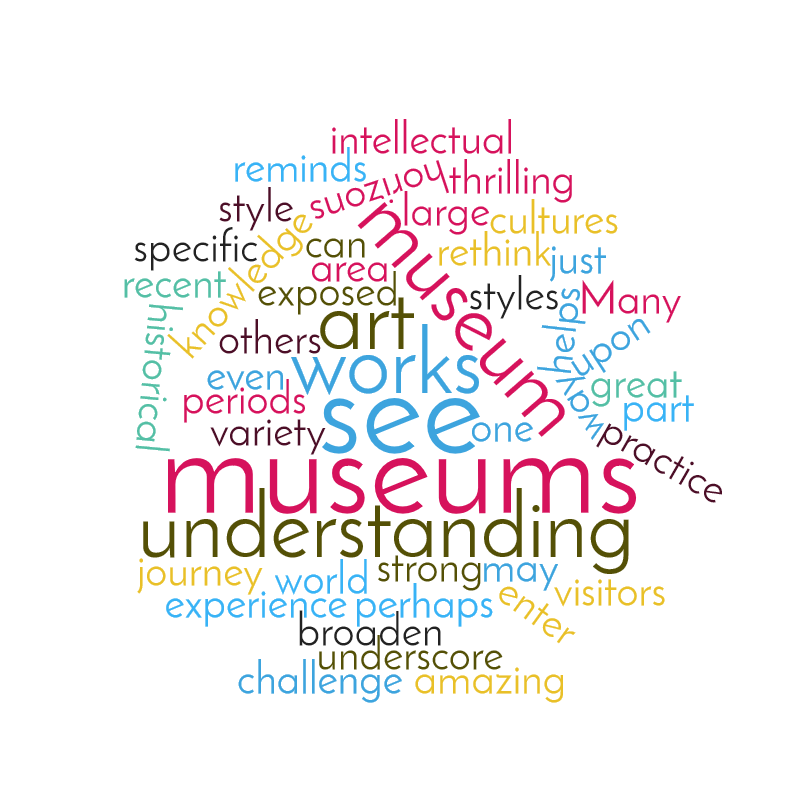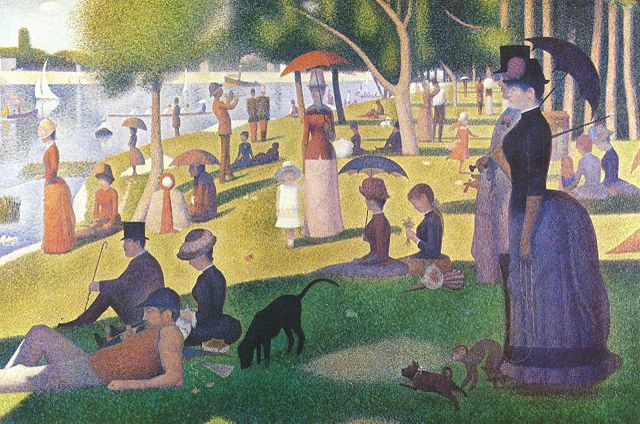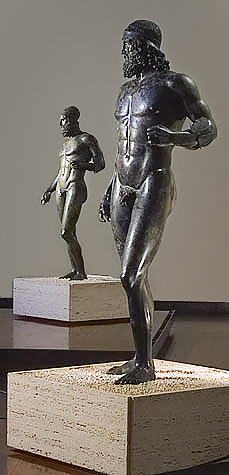Over the holiday break I had the opportunity to visit a major museum in Pittsburgh that I had never before visited. I was with a small group of people so the amount of time I could spend in any one wing was limited, but I was still able to whet my intellectual appetite for the wondrous historical artifacts and products of the human mind. I probably could have spent all day in the museum, but instead I had to settle for a few hours.
 My recent museum experience reminds me just how thrilling great museums can be. To see specific works that underscore my understanding of a historical style or practice – or to see works that challenge my understanding – is part of the amazing intellectual journey I enter upon in the museum. Many visitors to museums may be strong in one area of art knowledge but not in others, so being exposed to a variety of art periods, styles, and cultures in large museums helps to broaden horizons and perhaps even rethink the way we see the world.
My recent museum experience reminds me just how thrilling great museums can be. To see specific works that underscore my understanding of a historical style or practice – or to see works that challenge my understanding – is part of the amazing intellectual journey I enter upon in the museum. Many visitors to museums may be strong in one area of art knowledge but not in others, so being exposed to a variety of art periods, styles, and cultures in large museums helps to broaden horizons and perhaps even rethink the way we see the world.
Of course, it’s always fun to see works in person that you have only read about before in books. It’s the art equivalent of meeting a celebrity!
Should museums do more to bring in visitors?
This brings me to a larger point about the value of museums. I came across an entry at a blog associated with the Getty that discussed how museums can “engage millennials”. The author made a particular statement that seemed to reflect her larger disposition:
We do our jobs as museum professionals to preserve cultural history and maintain its relevance in society, especially as society changes. If we don’t serve a broad public, our jobs lose meaning and purpose. If there is a perception that museums are not very good at serving and engaging any group of people, then it’s on us who work in museums to either dispel the misconception or change the way we do things.
 I am struggling to figure out whether I disagree with this statement or am in agreement but with qualifications. On one hand, it is only natural that museums want to engage their audiences, but on the other it is not clear that the purpose of museums (or their employees) would be lost if engagement were to decline. I think that as society becomes more superficial and self-seeking, people will naturally disengage with the more profound ideas offered by artists and craftsmen of the past. As this disengagement deepens, we need to ask whether museums really need to “chase after” people to get them to visit.
I am struggling to figure out whether I disagree with this statement or am in agreement but with qualifications. On one hand, it is only natural that museums want to engage their audiences, but on the other it is not clear that the purpose of museums (or their employees) would be lost if engagement were to decline. I think that as society becomes more superficial and self-seeking, people will naturally disengage with the more profound ideas offered by artists and craftsmen of the past. As this disengagement deepens, we need to ask whether museums really need to “chase after” people to get them to visit.
This idea sounds rather absurd. Does the Art Institute of Chicago need to convince young people that seeing Seurat’s A Sunday on La Grand Jatte in person is a better alternative than spending a few hours on Snapchat? Are statues like the Riace Warriors worthy of visiting because they provide a way to get selfies with a funny backdrop, or because of what they offer us in terms of knowledge of the development of Greek civilization? The way I see it, either people want to visit museums because they recognize the value of the objects contained therein, or they don’t want to visit them because they don’t recognize their value. Unless a museum is completely mismanaged and therefore deserving of blame in creating a poor visitor experience, I think the blame should be placed on those who should value the importance of museums but do not.
 But even if a museum fails to bring in large crowds, it still plays a vital role in safeguarding access to cultural heritage for current and future generations. This type of preservation would not so easily be accomplished if the works inside the museum walls were in private hands. “Serving the public” is therefore accomplished by protecting works even if people are not lining to buy tickets to see them today; the public of tomorrow will still be served and will reap the rewards of today’s labor.
But even if a museum fails to bring in large crowds, it still plays a vital role in safeguarding access to cultural heritage for current and future generations. This type of preservation would not so easily be accomplished if the works inside the museum walls were in private hands. “Serving the public” is therefore accomplished by protecting works even if people are not lining to buy tickets to see them today; the public of tomorrow will still be served and will reap the rewards of today’s labor.
The lesson for today
I think there is a danger of being too “corporate” in the treatment of the humanities. Or perhaps better said, there is a danger of being too “corporate” with life in general. Practical realities are indeed important, but they should not overshadow larger concerns and ideas that stand above the ephemeral whims and trends modern culture.


